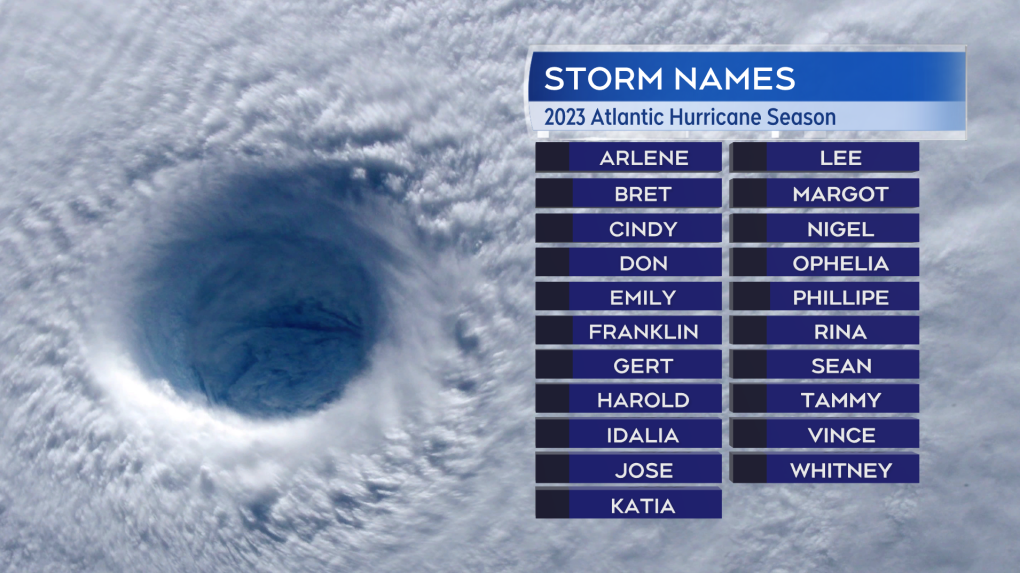America’s National Hurricane Centre predicts near normal 2023 Atlantic hurricane season
 Fiona as a major category four hurricane as it moves northward on September 22nd, 2022 on satellite imagery courtesy of NASA. Fiona would landfall as a devastating post-tropical storm on the Canso Peninsula of Nova Scotia on the morning of September 24th.
Fiona as a major category four hurricane as it moves northward on September 22nd, 2022 on satellite imagery courtesy of NASA. Fiona would landfall as a devastating post-tropical storm on the Canso Peninsula of Nova Scotia on the morning of September 24th.
America’s National Hurricane Centre, as part of the National Oceanic and Atmospheric Association (NOAA), has released a prediction for a near normal 2023 Atlantic hurricane season.
The organization is calling for 12 to 17 named storms, with five to nine becoming hurricanes. Of those, one to four are expected to become major hurricanes, which are category three to category five by definition.
The probability forecast for the season is given as a 40 per cent chance of being near normal, 30 per cent chance of above normal, and 30 per cent chance of below normal.
The 2022 Atlantic hurricane season finished near normal with 14 named storms, eight hurricanes, and two major hurricanes.
One of the two major hurricanes in 2022 was of course Hurricane Fiona. The storm reached category four before transitioning to a powerful post-tropical storm that caused a devastating amount of damage to Atlantic Canada. In January, the Insurance Bureau of Canada estimated the insured damages related to the storm will reach $800 million, making it the costliest weather event for the region. The name Fiona has been retired from use in future hurricane lists, in part due to those costs.
The forecast comes out of an analysis of competing factors for the upcoming season. Working against a favourable hurricane season is an expected El Nino in the Pacific. An El Nino is the presence of warmer surface water temperatures in the eastern Pacific near South America. El Nino often comes with stronger winds over the tropical and sub-tropical Atlantic, which can work to tear apart clusters of thunderstorms before they can strengthen in to a tropical storm or hurricane.
Also impacting hurricane development is the expectation of stronger west African monsoon season. The thunderstorms produced by the monsoon season can drift over the tropical waters of the Atlantic and act as the “seed” for a tropical storm or hurricane. Additionally warmer-than-normal sea surface temperatures are still being observed in the tropical Atlantic and Caribbean. Warmer ocean waters are the “fuel” for tropical storms and hurricanes.
 The list of names to be used for named storms for the 2023 Atlantic Hurricane Season.
The list of names to be used for named storms for the 2023 Atlantic Hurricane Season.
Regardless of how many tropical storms or hurricanes develop in a season it only takes one land-falling storm to have dire consequences. You should have a plan in place in the event of an impacting tropical storm, hurricane, or post-tropical storm. Those plans should include how to go 72 hours or longer without power. For help creating an emergency plan the Government of Canada offers resources at: www.getprepared.gc.ca/index-en.aspx.
The Canadian Hurricane Centre will be holding a briefing on the 2023 Atlantic Hurricane Season at 2 PM ADT. More to come.
CTVNews.ca Top Stories

LIVE AT 11 EST Trudeau to announce temporary GST relief on select items heading into holidays
Prime Minister Justin Trudeau will announce a two-month GST relief on select items heading into holidays to address affordability issues, sources confirm to CTV News.
'Ding-dong-ditch' prank leads to kidnapping, assault charges for Que. couple
A Saint-Sauveur couple was back in court on Wednesday, accused of attacking a teenager over a prank.
Joly says next U.S. ambassador Hoekstra will help advance 'shared priorities'
Foreign Affairs Minister Melanie Joly is welcoming president-elect Donald Trump's pick for the next U.S. ambassador in Ottawa.
Estate sale Emily Carr painting bought for US$50 nets C$290,000 at Toronto auction
An Emily Carr painting that sold for US$50 at an estate sale has fetched C$290,000 at a Toronto auction.
Parole board 'working' to have Bernardo victims' families attend hearing in-person
The Parole Board of Canada says it is now working to allow victims' families to attend Paul Bernardo's parole hearing and deliver their victim impact statements in person.
Border agency detained dozens of 'forced labour' cargo shipments. Now it's being sued
Canada's border agency says it has detained about 50 shipments of cargo over suspicions they were products of forced labour under rules introduced in 2020 — but only one was eventually determined to be in breach of the ban.
Ontario man agrees to remove backyard hockey rink
A Markham hockey buff who built a massive backyard ice rink without permissions or permits has reluctantly agreed to remove the sprawling surface, following a years-long dispute with the city and his neighbours.
2 boys drowned and a deception that gripped the U.S.: Why the Susan Smith case is still intensely felt 30 years later
Inside Susan Smith’s car pulled from the bottom of a South Carolina lake in 1994 were the bodies of her two young boys, still strapped in their car seats, along with her wedding dress and photo album. Here's how the case unfolded.
This is how much money you need to make to buy a house in Canada's largest cities
The average salary needed to buy a home keeps inching down in cities across Canada, according to the latest data.

































